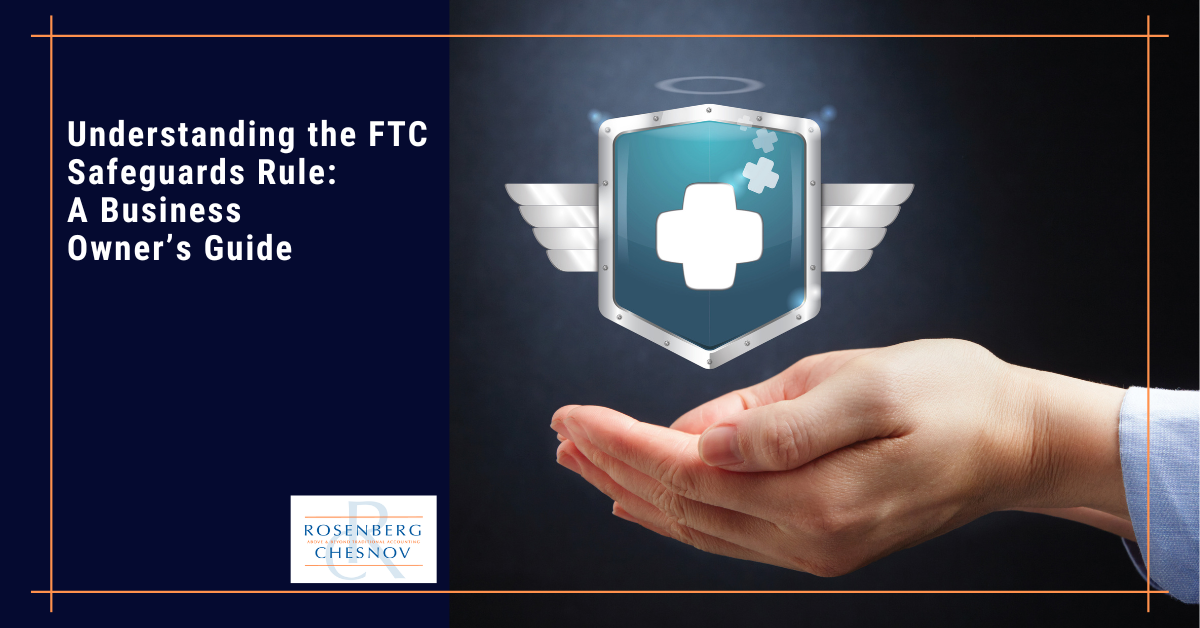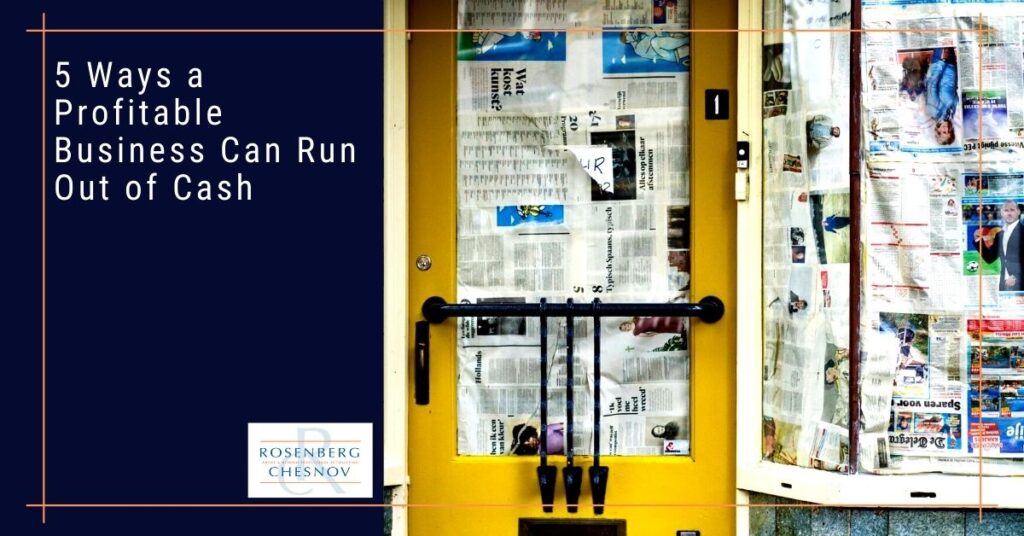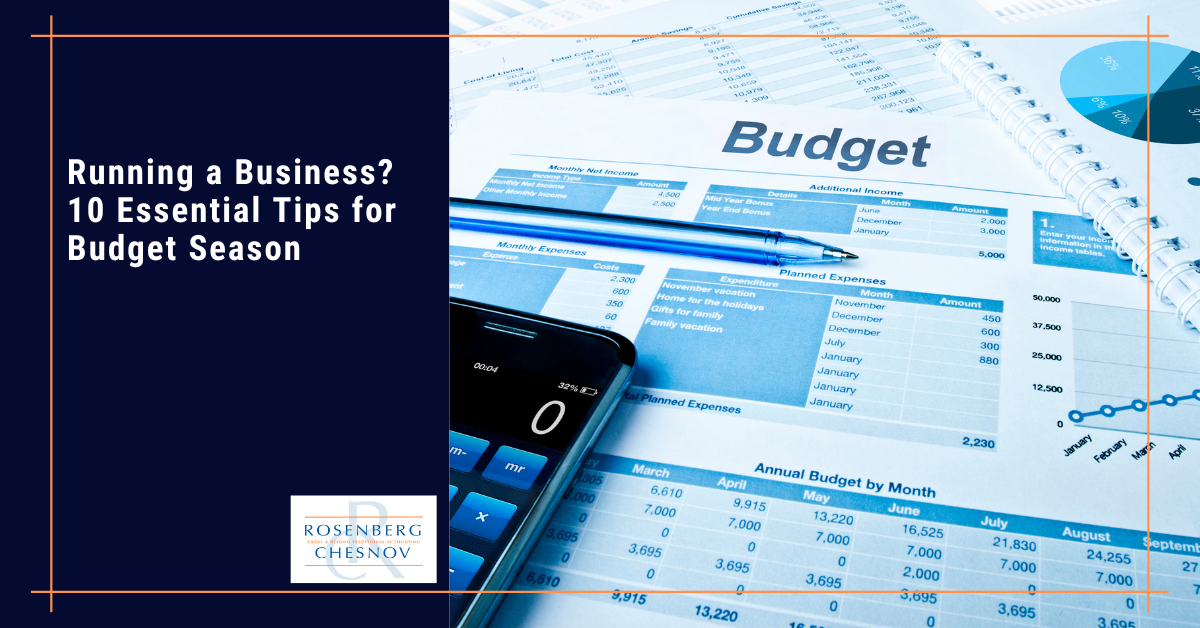

Understanding the FTC Safeguards Rule: A Business Owner’s Guide
Category: Accounting
As I discuss in a different post, income (or profit) is not the same as cash flow. In this post, I talk about how profitable businesses can run out of cash even when doing the right things.
That a profitable business can run out of cash is counterintuitive. It is also critically important for a business owner to understand. In the long term, profitability matters. But in the short term, you can have negative profits and still stay in business.
However, if you are out of cash, you must raise some money, or your business will fail.
Business owners tend to assume that cash will increase with profits. However, managing cash is a core issue for growing businesses because growth itself can easily use up all of your cash. Fast profit growth can kill a business just as easily as not having enough sales to cover expenses.
So below are five common ways that a profitable business can run out of cash.


In its simplest form, profit is revenue minus expenses. The challenge is that some uses of cash are not expenses, so they use up your cash but don’t reduce your profit.
When you are growing your business, you will come across all five of these cash flow issues. These are not mistakes or problems; they are simply areas that you must manage.
As you grow, you will likely need to buy equipment. Very high-end computers or manufacturing equipment cost cash that you spend now, but you only realize the profit-reducing expense over time.
Assume you buy a $75,000 piece of equipment, whether a machine for manufacturing a widget or a high-end computer for complex information work. The vendor will require payment now, but you will spread the expense out over the expected life of the item as a depreciation expense.
If we assume that you can depreciate this equipment over 5 years, then only $15,000 of the $75,000 is an expense that reduces profit. The other $60,000 is cash that is leaving the business, but counts as profit.
To avoid this scenario, you can finance the equipment purchase through a lease or a loan. Financing can better help you tie the cash outflows to the cash inflows. But, there is also an expense to this in the form of interest. Depending on your situation, that expense may be well worth it.
Buying product that you put into inventory takes cash, but it is not an expense until you sell the product. For businesses that trade in physical products, this can be a huge issue.
There is also a service “work in progress” that is akin to inventory. If you do work that you can’t bill right away, this is like inventory: you pay your people to do the work but don’t charge for it or receive the payment until some time in the future.
As you grow, you will need more stock and work in progress. The more prospects you have and the higher you expect your future sales to be, the more significant that inventory investment will become. Increasing inventory takes cash, but it doesn’t become an expense that reduces income until you sell it.
Compounding the inventory issue are the next two uses of cash: accounts receivable and accounts payable.
Accounts receivable is the amount of money that your clients owe you for a product or service they have already received. Accounts receivable is not inventory: your customers or clients have received your product or service, and you have billed for it.
If you sell a product today, that is considered income and increases profit. But you don’t receive the cash until your customer or client pays you. If that takes 90 days, then you have 90 days of profit but no cash.
Increasing accounts receivables is a pervasive problem for growing companies. This is especially true for those good at what they do and are good at selling it. They often lack the accounting and controlling processes to follow up after the sale to collect the money.
The best way to counter increasing accounts receivable is to implement accounting and controlling processes to monitor and control your accounts.
Account payable is the money you owe your suppliers for goods or services that you bought and have received. Accounts payable is the opposite of accounts receivable; you receive the product but pay later.
A decrease in accounts payable means that you are paying your vendors more quickly. While it is a good idea to treat your vendors well and pay quickly, this does impact your cash.
In most cases, you want to keep both receivables and payables low, especially if you are dealing with other small businesses facing the same issues.
However, there are situations in which you may be able to stretch your payments out a bit. Think of your utility bills; you generally have 30 days to make a payment, so you might as well wait 30 days to do so.
Also, in some industries, retail, for example, there are expectations around accounts payable that you should both understand and take advantage of. I say understand because in these industries, your accounts receivable may grow, but it is also acceptable to delay payment. If this is the culture of your industry, know this so that you don’t get caught with significant receivables while you pay your payables quickly.
The general strategy you should follow is to match receivable time outstanding to payable time outstanding. Or collect your receivables more quickly than you pay your payables. Just be sure that if you pay more slowly, you are meeting your vendor’s expectations. Not paying your vendors on time can lead to a whole different set of problems.
Paying interest on a loan is an expense, but paying back principal is not. It does take cash, however. So any amount that you pay reduces your cash but not your profit.
When you do borrow money, consider the timing of payments and your expected cash flow. Making loan payments will require extra cash.
For illustration, assume a company’s income sheet looks something like this:
| Revenue | $1,000,000 |
| Cost of Goods Sold | – $400,000 |
| Gross Profit | $600,000 |
| Expenses | – $400,000 |
| Profit | $200,000 |
From the profit perspective, this is not a bad situation: 20% profit is pretty good. If we assume the business pays 25% taxes (just an assumption, this rate will vary), the business owes $50,000 in taxes.
This all looks very reasonable. However, from a cash perspective, this business can easily be in trouble. Assume that the cash flow statement looks something like this:
| Profit | $200,000 |
| Equipment purchase | -$75,000 |
| Equipment expense | +$15,000 |
| Additional inventory | -$65,000 |
| Increase in accounts receivable | -$20,000 |
| Decrease in accounts payable | -$15,000 |
| Loan principal payment | -$40,000 |
| Net cash | 0 |
In this example, the changes in these five cash levers leave the company with zero cash and a $50,000 tax bill. A cash situation like this can easily put a profitable, promising company out of business.
Ultimately this comes down to timing and management. The danger is in not managing your cash flow carefully. If you assume it will all work out, that profit will save the day, and as a result, you don’t manage your cash, then you can fall into the zero cash trap.
On the other hand, some small changes can make a huge difference. In the example above, faster collection of receivables, financing the equipment purchase, and optimizing inventory could easily free up the cash needed to pay taxes.
The trick is to manage and monitor your business activities continuously. This is an important service that your accountant can provide.
If you are a client and would like to book a consultation, call us at +1 (212) 382-3939 or contact us here to set up a time.
If you aren’t a client, why not? We can take care of your accounting, bookkeeping, tax, and CFO needs so that you don’t have to worry about any of them. Interested? Contact us here to set up a no-obligation consultation.
Interested in receiving updates in your mailbox? Check out our newsletter, full of information you can use. It comes out once every two weeks and you can register for it here:


Category: Accounting


Category: Management


Category: Management
Send us a message and we will contact you as soon as possible.
Send us a message and we will contact you as soon as possible.
Jeff Coyle, CPA, Partner of Rosenberg Chesnov, has been with the firm since 2015. He joined the firm after 20 years of business and accounting experience where he learned the value of accurate reporting, using financial information as a basis for good business decisions and the importance of accounting for management.
He is a diligent financial professional, able to manage the details and turn them into relevant business leading information. He has a strong financial background in construction, technology, consulting services and risk management. He also knows what it takes to create organizations having built teams, grown companies and designed processes for financial analysis and reporting.
His business experience includes:
Creating and preparing financial reporting, budgeting and forecasting.
Planning and preparation of GAAP and other basis financial statements.
Providing insight on financial results and providing advice based on those results.
Jeff also has a long history of helping individuals manage their taxes and plan their finances including:
Income tax planning and strategy.
Filing quarterly and annual taxes.
Audit support.
General financial and planning advice.
Prior to joining the firm in 2015, Jeff was in the private sector where he held senior financial and management positions including Controller and Chief Financial Officer. He has experience across industries, including construction, technology and professional services which gives him a deep understanding of business.
Jeff graduated from Montclair State University, he is a CPA and member of the American Institute of Certified Public Accountants, New York State Society of Certified Public Accountants and New Jersey State Society of Public Accountants.
Jody H. Chesnov, CPA, Managing Partner of Rosenberg Chesnov, has been with the firm since 2004. After a career of public accounting and general management, Jody knows the value of good financials. Clarity, decision making, and strategy all start with the facts – Jody has been revealing the facts and turning them into good business results for more than three decades.
He takes a pragmatic approach to accounting, finance and business. His work has supported many companies on their path to growth, including helping them find investors, manage scaling and overcome hurdles. His experience and passion for business reach beyond accounting and he helps businesses focus on what the numbers mean organizationally, operationally and financially.
He has a particular expertise in early-stage growth companies. His strengths lie in cutting through the noise to come up with useful, out of the box, solutions that support clients in building their businesses and realizing their larger visions.
Prior to joining the firm in 2004, Jody was in the private sector where he held senior financial and management positions including General Manager, Chief Financial Officer and Controller. He has experience across industries, which gives him a deep understanding of business.
Jody graduated with a BBA in Accounting from Baruch College, he is a CPA and member of the American Institute of Certified Public Accountants and New York State Society of Certified Public Accountants.
In addition to delivering above and beyond accounting results, Jody is a member of the NYSCPA’s Emerging Tech Entrepreneurial Committee (ETEC), Private Equity and Venture Capital Committee and Family Office Committee.
He is an angel investor through the Westchester Angels, and has served as an advisor for many startup companies and as a mentor through the Founders Institute.